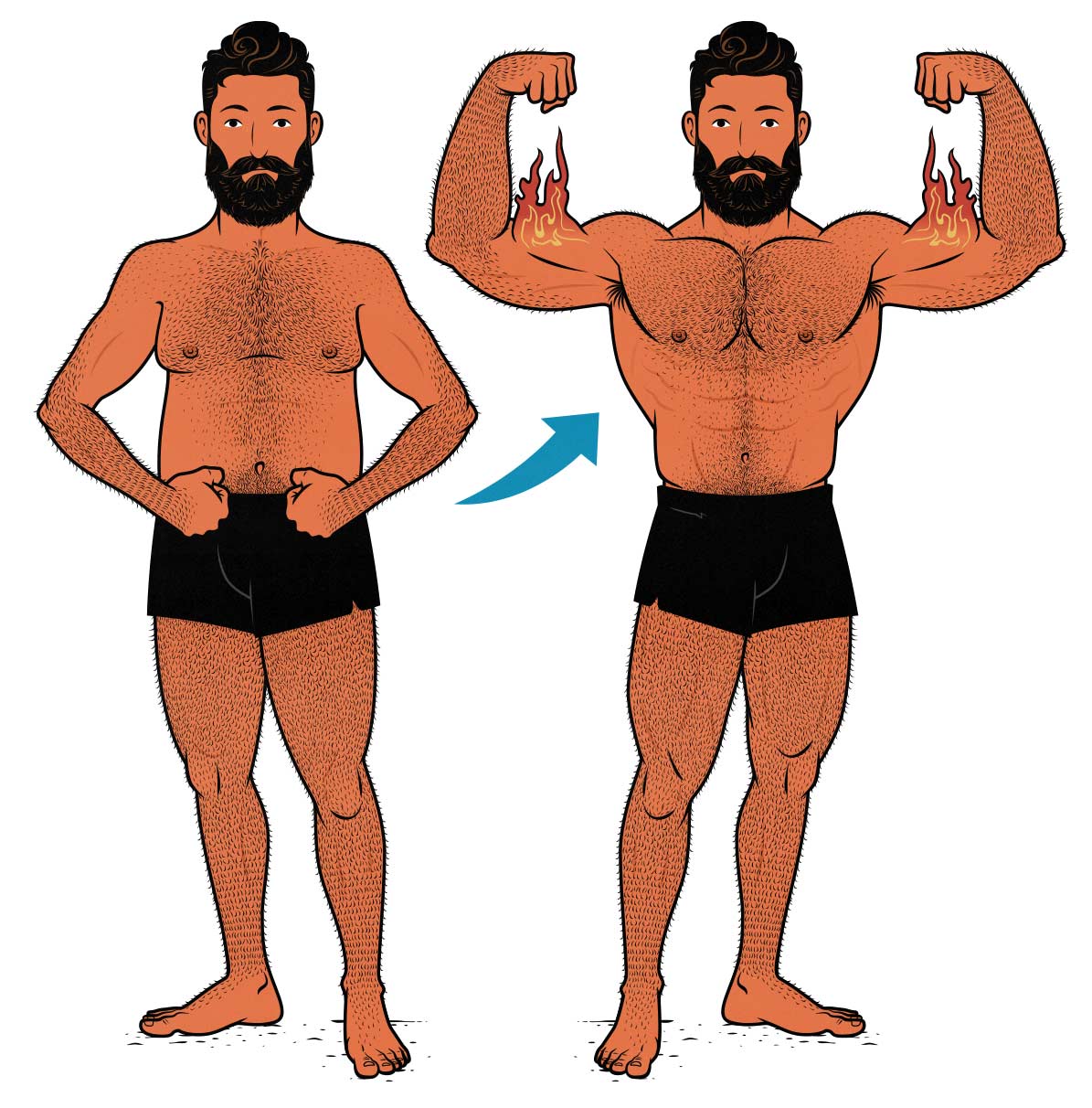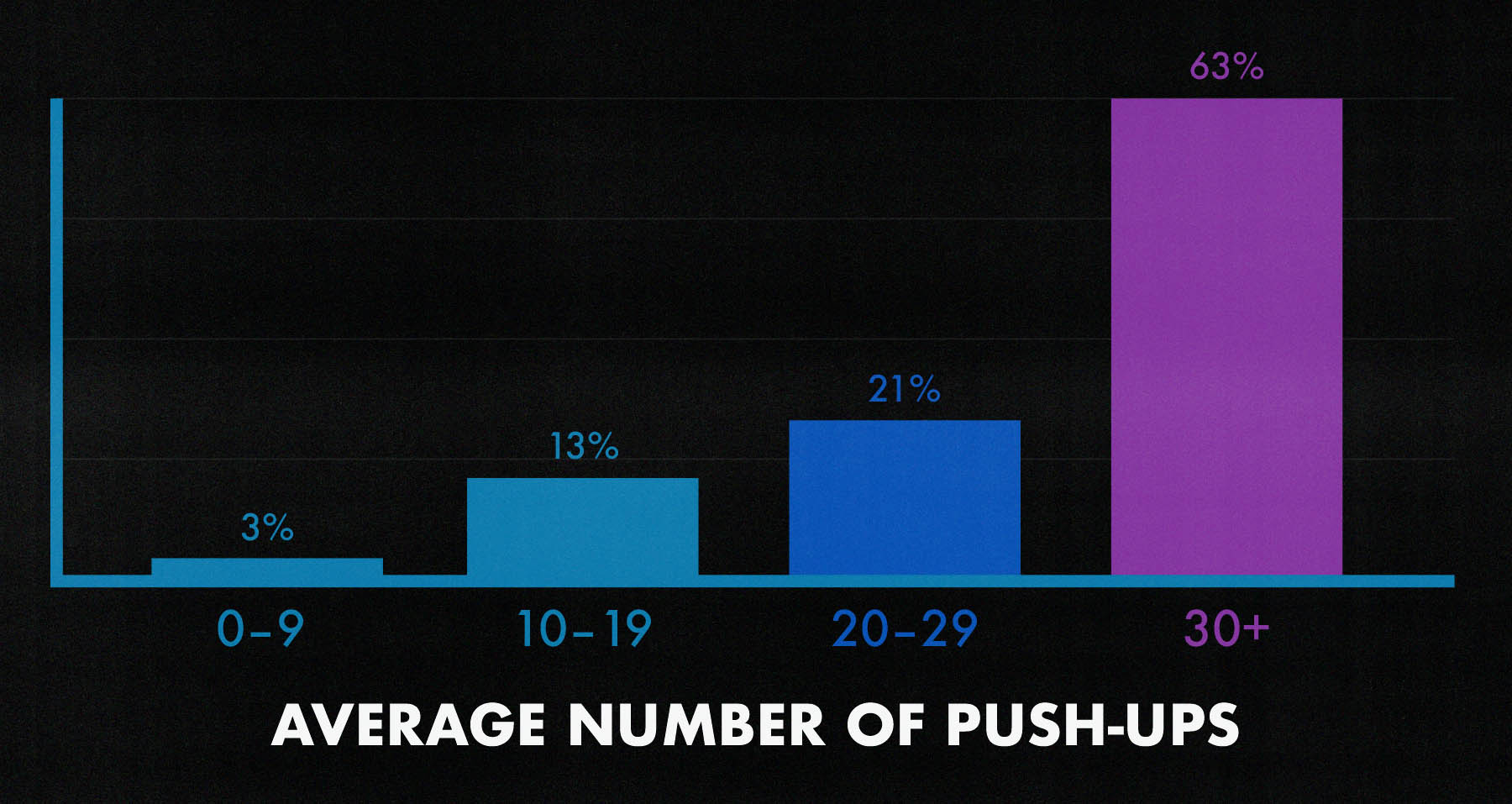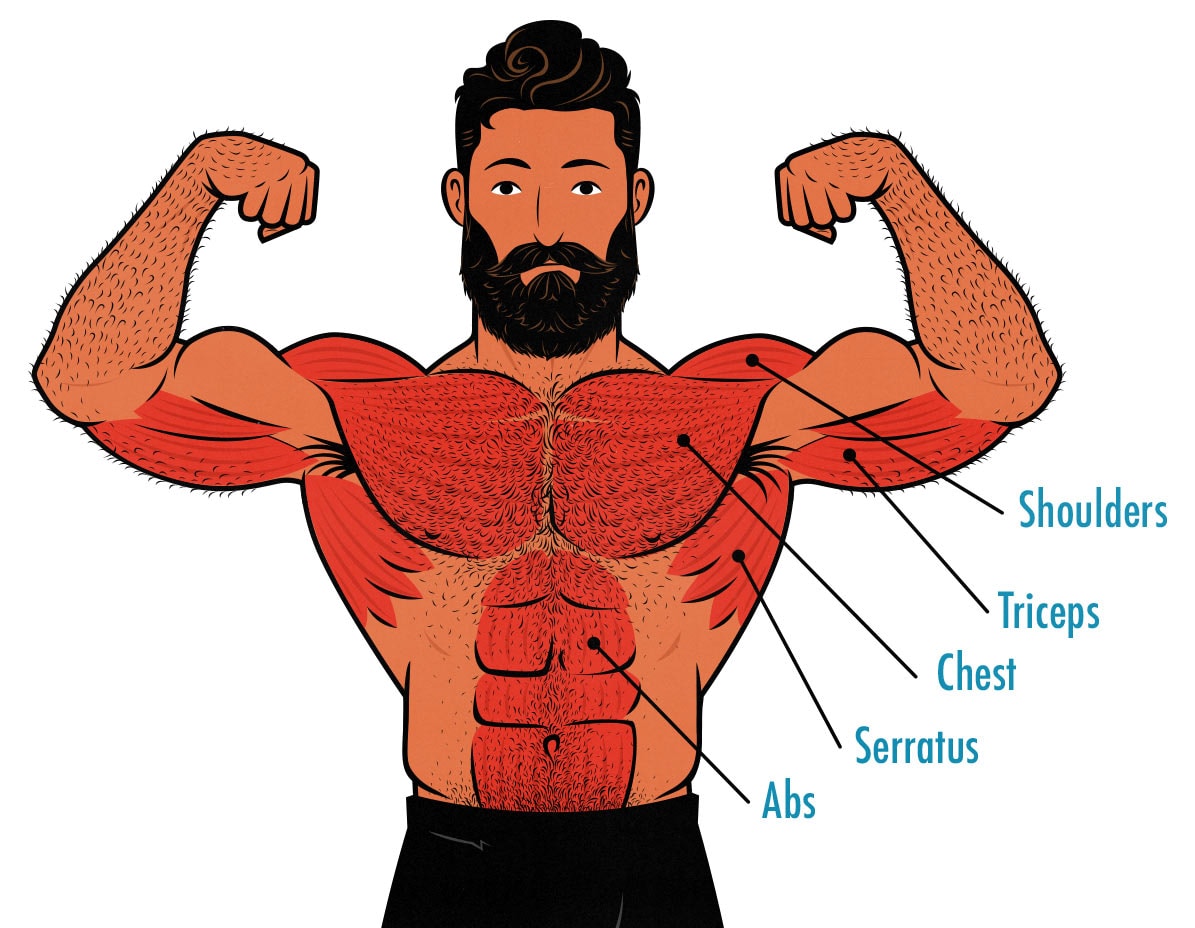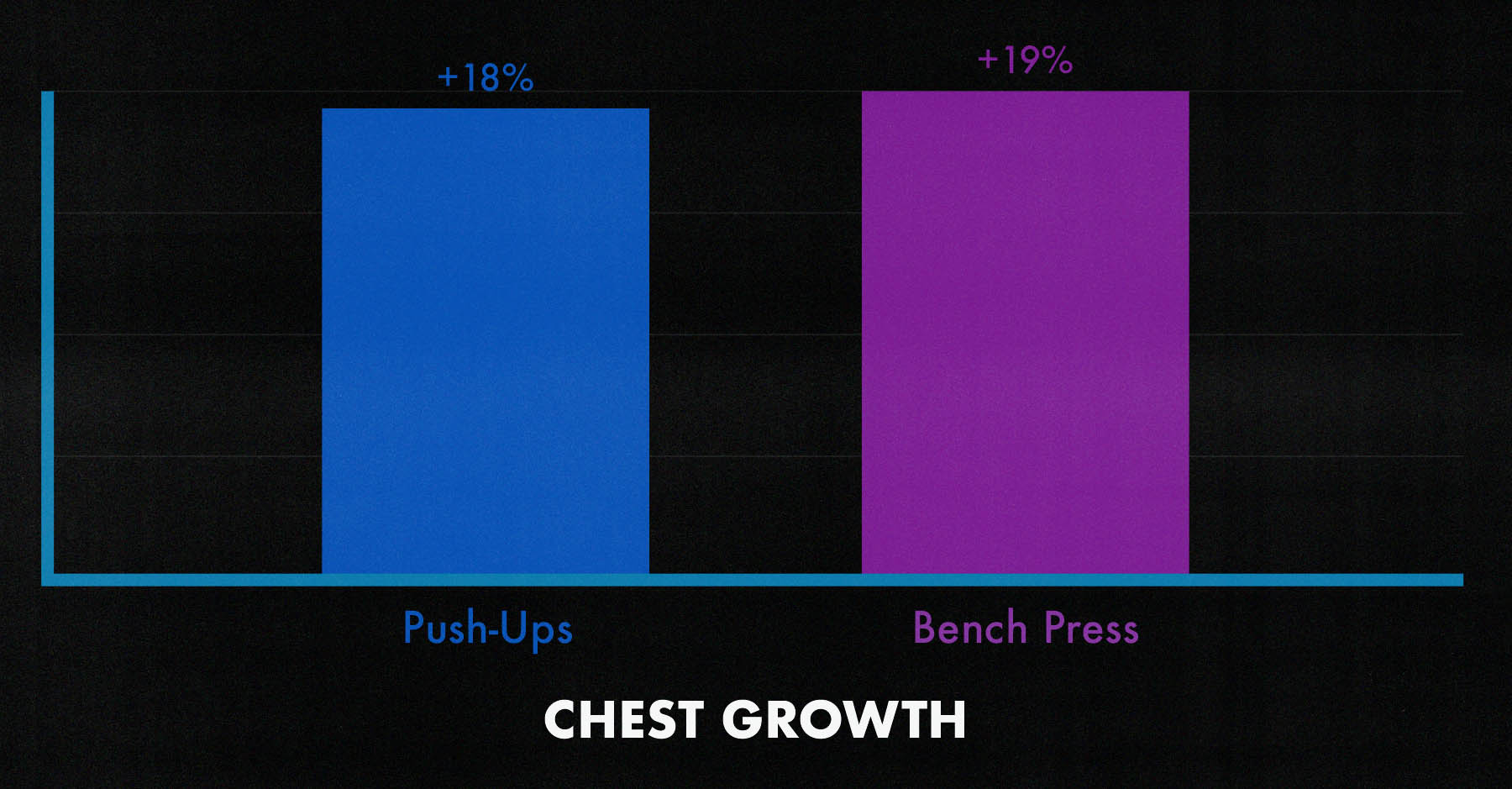
How Many Push-Ups Should You Be Able To Do in a Row?
A man in good shape should be able to do 30–40 push-ups. One recent study found that going from under 10 push-ups to over 30 was associated with a 75% reduction in the risk of heart disease. Getting up to 40 push-ups was associated with 96% lower risk (study). Most earlier studies have found similar benefits (study, study, study).
Being able to do 30–40 push-ups also shows a great level of strength, athleticism, and fitness, and it’s enough to qualify for the police, firefighting, and all military branches (reference, reference).
Once you can do more than 40 push-ups, they stop being as good for gaining muscle and strength, so you should probably make them harder instead of trying to get even more repetitions. I’ll give you progressions at the end.

How Many Push-Ups Can the Average Man Do?
Doing 30–40 push-ups is realistic for the average man who works out. I surveyed 594 of the guys from our newsletter, asking how many push-ups they could do, along with how much they could squat, bench press, deadlift, and overhead press. I also asked how long they’d been training.

- 63% of men could do at least 30 push-ups
- 21% could do 20–29 push-ups
- 13% could do 10–19 push-ups.
- 3% could do 1–9.
- 0.4% couldn’t do any.
98% of these guys were in the habit of working out, and 84% of them had been training for at least a year. It isn’t uncommon for the average sedentary to struggle to get a single push-up. To get 30+ push-ups, most people need to build some muscle and burn some fat.
During your first year, you should be able to get to at least 20 push-ups. If you’re starting thin, it’s realistic to aim for 30+. You might be able to get there within a few months. If you’re heavier, it will take longer, but you’ll be working your muscles harder, and they’ll be much bigger by the time you get to 30.
The Benefits of Push-Ups
Push-ups are among the best exercises for bulking up your chest, shoulders, triceps, and serratus anterior (underneath your armpits). They’re also pretty good for building bigger abs and strengthening your posture. By the time you can do 30–40, those muscles will be quite developed, especially if you can do it at a heavier body weight.

Regular push-ups are about as effective as the bench press (study). Deficit push-ups are probably even better than bench presses because they train your muscles through a deeper range of motion, stimulating even more muscle growth (full explanation).

The downside is that once you can do 20 reps, they can get quite painful, and once you can do 40, they stop being as good for gaining muscle and strength (full explanation). So, once you can do 15–30 reps, we recommend making them harder, either by raising your feet, doing deficit push-ups, or switching to dips.
How to Do More Push-Ups
There are two methods you can use to do more push-ups, and you can combine them both together:
- Hypertrophy training (AMRAP Sets): do 3–5 sets of push-ups every 2–3 days. Do as many reps as possible, taking each set to the cusp of failure. Every workout, try to do more total reps than last time. That will help you build bigger pecs, shoulders, and triceps, and it will strengthen your posture. Building bigger, stronger pushing muscles will make you better at push-ups.
- Greasing the groove: do a few easy sets of push-ups every day, stopping far from failure. For example, if you can do 5 push-ups, stop at 2. If you can do 10, stop at 5. If you can do 20, stop at 10. You aren’t trying to challenge your muscles. You aren’t trying to stimulate muscle growth. That would cause too much muscle damage. You’re just trying to practice your technique and improve your coordination.
As you get stronger, you can do more reps, but you can also add more weight. The easiest way to add weight is to steepen the angle of your push-ups (study) whenever you can do 15–30 reps:
- Hands raised on a tall bench (60cm): you lift 40% of your body weight.
- Hands raised on a short bench (30cm): you lift 55% of your body weight.
- Regular push-ups: you lift 65% of your body weight.
- Feet raised on a short bench (30cm): 70% of your body weight.
- Feet raised on a tall bench (60cm): 75% of your body weight.
- Dips: 100% of your body weight.
- Weighted Dips: More than 100% of your body weight.
Alright, that’s it for now. Good luck!
Shane Duquette is the co-founder of Outlift, Bony to Beastly, and Bony to Bombshell. He's a certified conditioning coach with a degree in design from York University in Toronto, Canada. He's personally gained 70 pounds and has over a decade of experience helping over 10,000 skinny people bulk up.


i am 76 years old i have built up my pushups from 5 early march to today 2nd October 90 pushups a day all in one effort